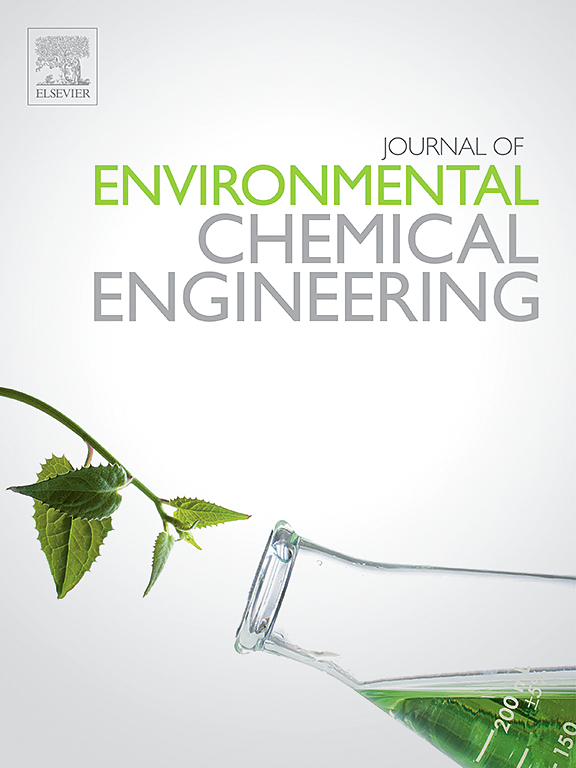A critical review of different types of biochar-based catalysts and mechanisms in advanced oxidation processes for organic contaminants removal
IF 7.2
2区 工程技术
Q1 ENGINEERING, CHEMICAL
引用次数: 0
Abstract
Biochar (BC)-assisted advanced oxidation processes (AOPs) offer an unprecedented opportunity for organic contaminant remediation because of their high efficiency and environmental friendliness. However, the catalytic mechanisms for different BC-assisted AOPs need to be further explored, considering that each type of BC catalyst possesses unique active sites and physicochemical properties, which influence associated catalytic mechanisms. Most existing reviews have focused on individual types of BC or AOPs, especially in relevance to mechanism. Furthermore, there is a lack of detailed understanding of the catalytic mechanisms derived from the various active sites in BC catalysts which restrict the ease of evolving design strategy for ideal catalytic structures. Therefore, this review evaluates and presents the current knowledge on the relevant active sites of BC-based catalysts, feasibility for generation of reactive oxygen species, and the associated catalytic mechanisms involved in AOPs for the four most known types of BC, which are pristine BC (P-BC), non-metallic heteroatom-doped BC (NM-BC), metal BC composite (M-BC), and metal and heteroatom co-doped BC (MHC-BC) catalysts. The factors influencing the catalytic properties of BC materials are systematically discussed, while highlighting the relationships with associated mechanisms and synthetic conditions. Finally, the current challenges and prospects associated with BC-AOPs are outlined. Overall, this review aims to inspire the rational design of more advanced BC-based catalysts for AOPs in the remediation of organic contaminants in the environment.
对不同类型的生物炭催化剂及其在去除有机污染物的高级氧化过程中的作用机制的重要评述
生物炭(BC)辅助高级氧化工艺(AOPs)因其高效性和环境友好性,为有机污染物修复提供了前所未有的机会。然而,考虑到每种生物炭催化剂都具有独特的活性位点和理化性质,这些都会影响相关的催化机理,因此需要进一步探索不同生物炭辅助高级氧化工艺的催化机理。现有的大多数综述都集中在个别类型的萃取剂或 AOPs 上,尤其是在机制方面。此外,人们对萃取催化剂中各种活性位点的催化机理缺乏详细了解,这限制了理想催化结构设计策略的发展。因此,本综述评估并介绍了目前对基于萃取催化剂的相关活性位点、活性氧生成的可行性以及 AOPs 中涉及的相关催化机理的了解,这四种已知类型的萃取催化剂分别是原始萃取 (P-BC)、掺杂非金属杂原子的萃取 (NM-BC)、金属萃取复合 (M-BC) 以及掺杂金属和杂原子的萃取 (MHC-BC) 催化剂。系统地讨论了影响 BC 材料催化特性的因素,同时强调了与相关机理和合成条件的关系。最后,概述了与 BC-AOPs 相关的当前挑战和前景。总之,本综述旨在启发人们合理设计更先进的基于萃取物的 AOP 催化剂,用于修复环境中的有机污染物。
本文章由计算机程序翻译,如有差异,请以英文原文为准。
求助全文
约1分钟内获得全文
求助全文
来源期刊

Journal of Environmental Chemical Engineering
Environmental Science-Pollution
CiteScore
11.40
自引率
6.50%
发文量
2017
审稿时长
27 days
期刊介绍:
The Journal of Environmental Chemical Engineering (JECE) serves as a platform for the dissemination of original and innovative research focusing on the advancement of environmentally-friendly, sustainable technologies. JECE emphasizes the transition towards a carbon-neutral circular economy and a self-sufficient bio-based economy. Topics covered include soil, water, wastewater, and air decontamination; pollution monitoring, prevention, and control; advanced analytics, sensors, impact and risk assessment methodologies in environmental chemical engineering; resource recovery (water, nutrients, materials, energy); industrial ecology; valorization of waste streams; waste management (including e-waste); climate-water-energy-food nexus; novel materials for environmental, chemical, and energy applications; sustainability and environmental safety; water digitalization, water data science, and machine learning; process integration and intensification; recent developments in green chemistry for synthesis, catalysis, and energy; and original research on contaminants of emerging concern, persistent chemicals, and priority substances, including microplastics, nanoplastics, nanomaterials, micropollutants, antimicrobial resistance genes, and emerging pathogens (viruses, bacteria, parasites) of environmental significance.
 求助内容:
求助内容: 应助结果提醒方式:
应助结果提醒方式:


